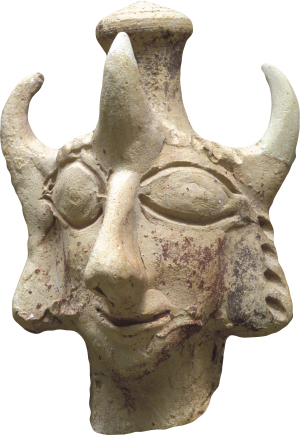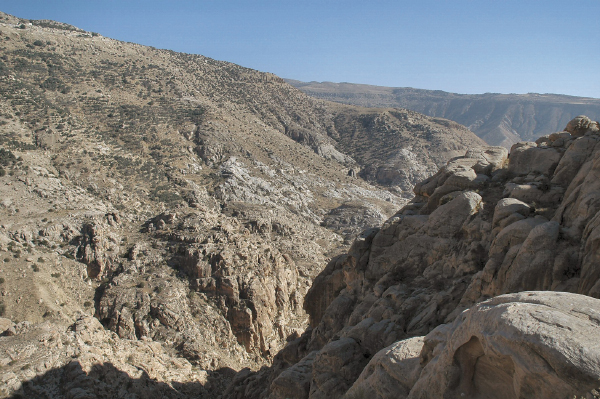Heading and Setting (1)
Obadiah (1). Obadiah means the “servant/slave of Yahweh.” He is, therefore, one who does what he is told by his master–here as an agent delivering a message. The message is presented as a vision (lit., “what is seen”); the term is also used to introduce the prophecies of Isaiah (Isa. 1:1) and Nahum (Nah. 1:1). Obadiah’s master is the sovereign Lord, a rendering of the Hebrew “my lord” followed by the divine name, Yahweh. God’s name is prominent here, signifying his rule over all nations as opposed to Qaus, the national god of Edom. God has a case against Edom, so he sends his envoy to rouse the nations as his agents to punish her.
Envoy (1). The rare Hebrew word ṣîr is only found in biblical poetry (Prov. 13:17; 25:13; Isa. 18:2; 57:9). There is nothing to distinguish it from the common word for “messenger, angel” (mal ʾāk). Throughout the ancient world, a messenger’s role was essential, for there were not other means of formal communication. Messengers conveyed their masters’ words orally or in writing. Hiram of Tyre “heard” Solomon’s message (1 Kings 5:7), while Sennacherib sent messengers to Hezekiah with a letter (2 Kings 19:9–14). The messengers may have memorized their words and carried a written version to substantiate their speech. In a treaty, a Hittite king about 1400 B.C. enjoined his vassal not to trust a messenger whose words did not agree with the written documents.7

Edomite diety found at Horvat Qitmit, perhaps Qaus
Z. Radovan/www.BibleLandPictures.com
Pride and Punishment (2–7)
Small (2). Nothing in Edom’s history could lead her to place herself among the “great powers,” even if she did control the valuable trade routes bringing incense, gold, and other rarities by land and sea from southern Arabia.
Clefts of the rocks (3). A major source of Edom’s pride is revealed. The natural cliffs and ravines edging her land provided inaccessible fastnesses and were ideal for guerrilla activity. The phrase “clefts of the rocks” may also be translated “clefts of Sela,” the name of the fortress that Amaziah captured and renamed Joktheel (2 Kings 14:17, cf. 2 Chron. 25:12).

Sela near Bozrah
Todd Bolen/www.BiblePlaces.com
There are two possible locations for Sela. One is Umm el-Biyara, a flat-topped rock rising almost 1,000 feet (300 m.) above the Petra basin and 3,700 feet (1,130 m.) above sea level. Ruined buildings of the eighth and seventh centuries B.C. have been excavated there, and among the finds is an imprint on clay of a king of Edom’s seal.8 The rival candidate is another flat-topped rock near Bozrah, still called Sela and also yielding Iron Age remains.9
Eagle (4). Edom’s cliffs offer ideal aeries for the griffon vulture and the imperial eagle, although their numbers have fallen markedly in modern times.
Grapes (5). Although only small quantities of grapes are grown today, the Edomite vineyards were evidently renowned in biblical times. Isaiah pictures God, having subdued the nations, as one coming from Edom and Bozrah with his clothes stained as if he has trodden the grapes there (Isa. 63:1–6); earlier he spoke of the devastation of the vineyards of Moab (Isa. 16:7–10; cf. Jer. 48:32). The Israelites were commanded, “Do not go over your vineyard a second time or pick up the grapes that have fallen. Leave them for the poor and the foreigner” (Lev. 19:10, TNIV; cf. Deut. 19:21), but nothing is to be left of Edom (cf. Jer. 6:9; Mic. 7:1). Her failure to stand by her brother Jacob (Obad. 10; cf. Amos 1:11) but rather to exult at the fall of Jerusalem condemns her to isolation and annihilation by the Babylonians.
Allies (7). This word translates “men of your covenant,” while “friends” translates “men of your peace.” These are defined as “those who eat your bread” in the solemnization of a pact or treaty (cf. Jacob and Laban, Joshua and the Gibeonites; Gen. 31:46, 54; Jos. 9:14), so for one partner to turn against the other was gross treachery (cf. Ps. 41:9, “man of my peace”).
Many ancient Near Eastern texts contain similar concepts. A pharaoh complained to a Syrian ruler that he had heard “you are at peace with the ruler of Qadesh and eat and drink together…. Why are you at peace with a ruler whom (I) am fighting with?”10 “Peace and brotherhood” is the term used for an alliance. In the pact made by Pharaoh Ramesses II and the Hittite king Hattusili III about 1259 B.C., the Egyptian says of the Hittite, “He is my brother, and I am his brother. He is at peace with me, and I am at peace with him forever.” A Hittite king wrote to a newly enthroned king of Babylon in phrases found in many diplomatic documents, “[When your father] and I established friendly relations and became brothers, [we] spoke [as follows]: ‘We are brothers. To the enemy of one another [we will be hostile and with] the friend of one another we will be friendly.’ ”11